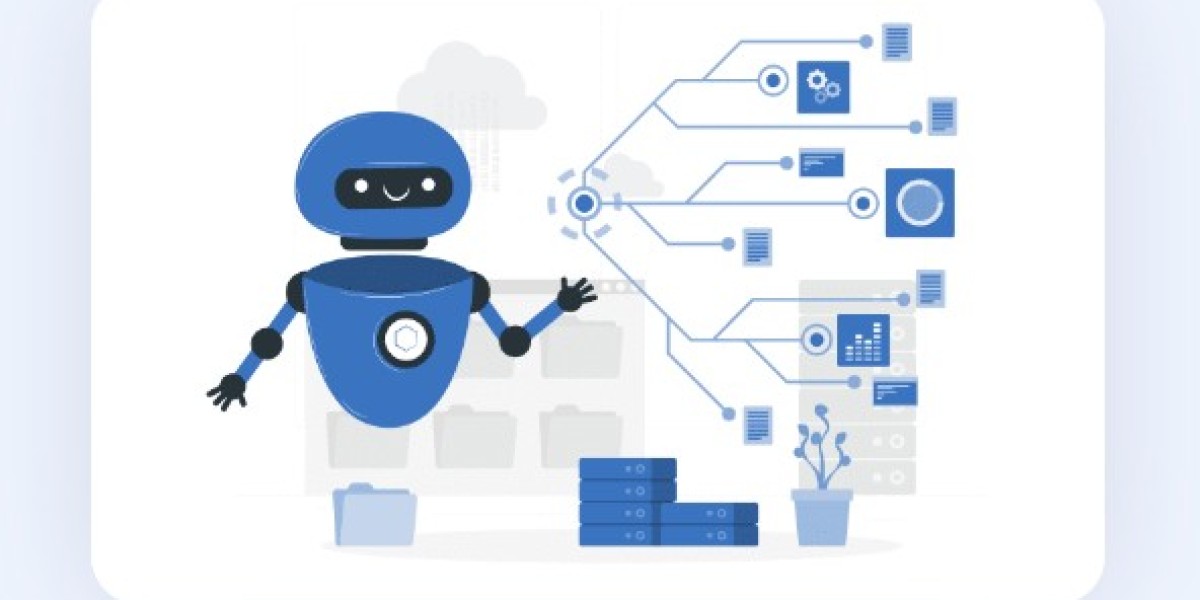In the rapidly evolving digital landscape, businesses are constantly looking for innovative ways to engage with customers, streamline communication, and enhance user experience. One such technology that has gained significant traction is the chatbot. With the rise of global markets and diverse customer bases, the ability to offer multilingual chatbot solutions has become more important than ever.
A multilingual chatbot not only allows companies to interact with customers in their native language but also opens doors to international markets, enhances customer satisfaction, and improves overall business efficiency. In this article, we’ll explore how building a multilingual chatbot can help you expand your reach globally and offer valuable insights into the development process.
Understanding the Importance of a Multilingual Chatbot
1. Catering to a Global Audience
The internet has no boundaries, and businesses today serve customers from various parts of the world. Whether your company is in retail, healthcare, education, or technology, you likely have clients from multiple countries speaking different languages. A chatbot that can communicate in multiple languages ensures that you provide seamless support, regardless of location or language preference.
By offering a multilingual chatbot, businesses can effectively break down the barriers of communication, thus allowing global customers to engage with them more comfortably. This results in higher customer satisfaction, as people are more likely to interact with your brand when they can speak their own language.
2. Boosting Customer Engagement
Studies have shown that customers prefer to communicate in their native language. A multilingual chatbot increases engagement by providing personalized, language-specific interactions. Customers feel more valued when they can converse in their language of choice, which enhances their overall experience with the brand.
By offering multilingual chatbot solutions, businesses can foster a deeper connection with customers, ensuring that they feel heard and understood. This can significantly improve customer retention and brand loyalty.
3. Improved Response Time
Another critical advantage of a multilingual chatbot is the instant communication it enables. Traditional customer service methods, such as email or phone calls, often involve delays and require manual intervention. A chatbot can instantly respond to customer queries in any language, reducing wait times and ensuring immediate assistance. This leads to higher efficiency, better customer service, and ultimately a better reputation for your business.
4. Reducing Operational Costs
A multilingual chatbot can handle hundreds of conversations simultaneously, reducing the need for multiple human agents to handle customer queries in different languages. This helps businesses save on operational costs while still offering high-quality support. Furthermore, chatbots are available 24/7, ensuring round-the-clock assistance for customers across different time zones.
5. Improving Data Collection
Multilingual chatbots can gather valuable data on customer preferences, behaviors, and concerns, regardless of their language. This data can then be analyzed to identify trends, improve product offerings, and better understand customer needs across various regions. A multilingual chatbot enables businesses to collect and analyze data from a global audience more efficiently than relying on human agents.
Key Considerations for Building a Multilingual Chatbot
Building a multilingual chatbot that caters to an international audience requires careful planning and the right set of tools. Here are some critical factors to keep in mind during the development process.
1. Choosing the Right Platform for Chatbot Development
The first step in creating a multilingual chatbot is choosing the right platform for chatbot development. Several chatbot development platforms offer multilingual capabilities, so it’s important to select one that meets your specific requirements. Look for platforms that allow easy integration with your existing systems, support multiple languages, and provide robust NLP (Natural Language Processing) tools.
Some popular chatbot development platforms include:
- Dialogflow: Offers easy integration with Google services and supports over 20 languages.
- Microsoft Bot Framework: Supports multiple languages and integrates with popular messaging platforms like Skype and Slack.
- Botpress: Open-source and highly customizable, suitable for building multilingual chatbots.
Make sure to choose a platform that not only supports multiple languages but also allows for continuous updates and improvements.
2. Choosing the Right Languages
While you may want to offer as many languages as possible, it's essential to choose the languages based on your target market and customer base. You don’t necessarily need to cover every language in the world. Instead, focus on the languages that are most relevant to your business and the regions where your customers reside.
Some of the most commonly spoken languages to consider include:
- English (the global business language)
- Spanish (widely spoken in North and South America)
- Mandarin (essential for the Chinese market)
- French (spoken in many European and African countries)
- German (important for businesses in Europe)
- Arabic (widely spoken in the Middle East)
Start with the languages that align with your business goals and customer needs, and then expand as your global presence grows.
3. Handling Different Dialects and Regional Variations
When building a multilingual chatbot, it's important to account for regional dialects and variations in language. For example, Spanish spoken in Mexico may differ significantly from Spanish spoken in Spain, and Portuguese in Brazil may be different from Portuguese in Portugal.
To ensure a seamless user experience, customize your chatbot to understand and respond in these regional variations. This may require tailoring your chatbot’s responses or even offering different versions of the chatbot for different regions.
4. Natural Language Processing (NLP) Capabilities
The success of your multilingual chatbot largely depends on the NLP capabilities it employs. NLP is the technology that enables chatbots to understand and respond to human language. It plays a crucial role in making the chatbot feel natural and intuitive to users.
When selecting an NLP tool, make sure it supports multiple languages and can recognize variations in grammar, tone, and intent. Some advanced NLP tools include:
- Google Cloud Natural Language API
- Microsoft LUIS (Language Understanding Intelligent Service)
- IBM Watson NLP
By leveraging these advanced NLP tools, you ensure that your chatbot can understand and respond accurately to users, regardless of their language.
5. Localization of Content
Localization goes beyond translation. It involves adapting your chatbot’s responses to the cultural context of the language, ensuring that the tone, expressions, and references are appropriate for each region. A chatbot that simply translates text may miss out on important nuances, which could confuse or frustrate users.
For example, an e-commerce chatbot may need to adapt product recommendations based on local preferences, or a healthcare chatbot may need to adjust its tone to align with cultural norms around medical advice. Pay attention to cultural differences when designing your chatbot’s content and responses.
Best Practices for Developing a Multilingual Chatbot
1. Start with a Core Language and Expand Gradually
Rather than trying to launch a fully multilingual chatbot all at once, start with one core language and then expand as you learn more about your customer base. Begin by offering support in the most widely spoken languages and gradually add more based on demand.
2. Test Your Chatbot Thoroughly
Before launching your multilingual chatbot, it’s essential to thoroughly test its performance in different languages. Ensure that all translations are accurate, the chatbot understands different dialects, and the responses make sense in the cultural context. Testing should also include user feedback to identify areas of improvement.
3. Ensure Seamless Integration
Your multilingual chatbot should integrate smoothly with your existing systems, such as your website, mobile apps, and customer service platforms. This ensures that users have a consistent experience across different channels and that your chatbot can access real-time information.
4. Monitor and Optimize Performance
Once your multilingual chatbot is live, it’s important to continuously monitor its performance and optimize it based on user feedback and interactions. Regular updates to language models, improvements in NLP capabilities, and addressing any bugs or issues will ensure your chatbot stays effective and relevant.
Conclusion
Building a multilingual chatbot is an essential strategy for businesses looking to expand their global reach. By embracing this technology, companies can enhance customer engagement, improve operational efficiency, and cater to a diverse, international audience. Whether you are in retail, healthcare, or any other industry, a multilingual chatbot can be a valuable tool to boost customer satisfaction and drive business growth.
By focusing on the right chatbot development platform, implementing advanced NLP capabilities, and considering localization, your business can successfully develop a multilingual chatbot that meets the needs of customers worldwide. As the world becomes more interconnected, multilingual chatbots will continue to play a pivotal role in facilitating communication, supporting customers, and enhancing the overall customer experience.









